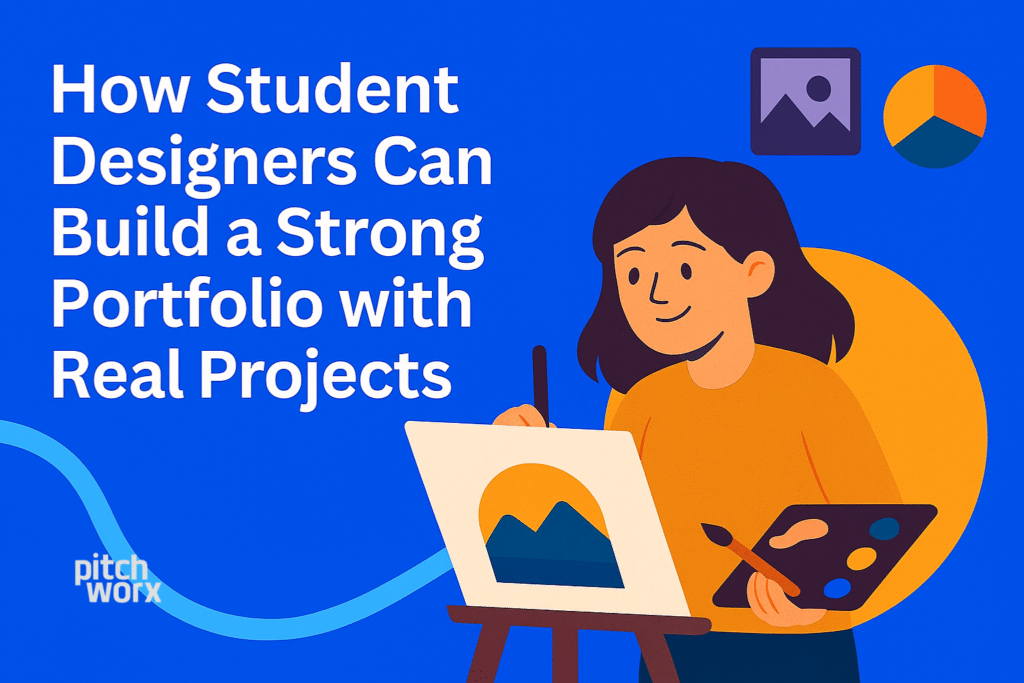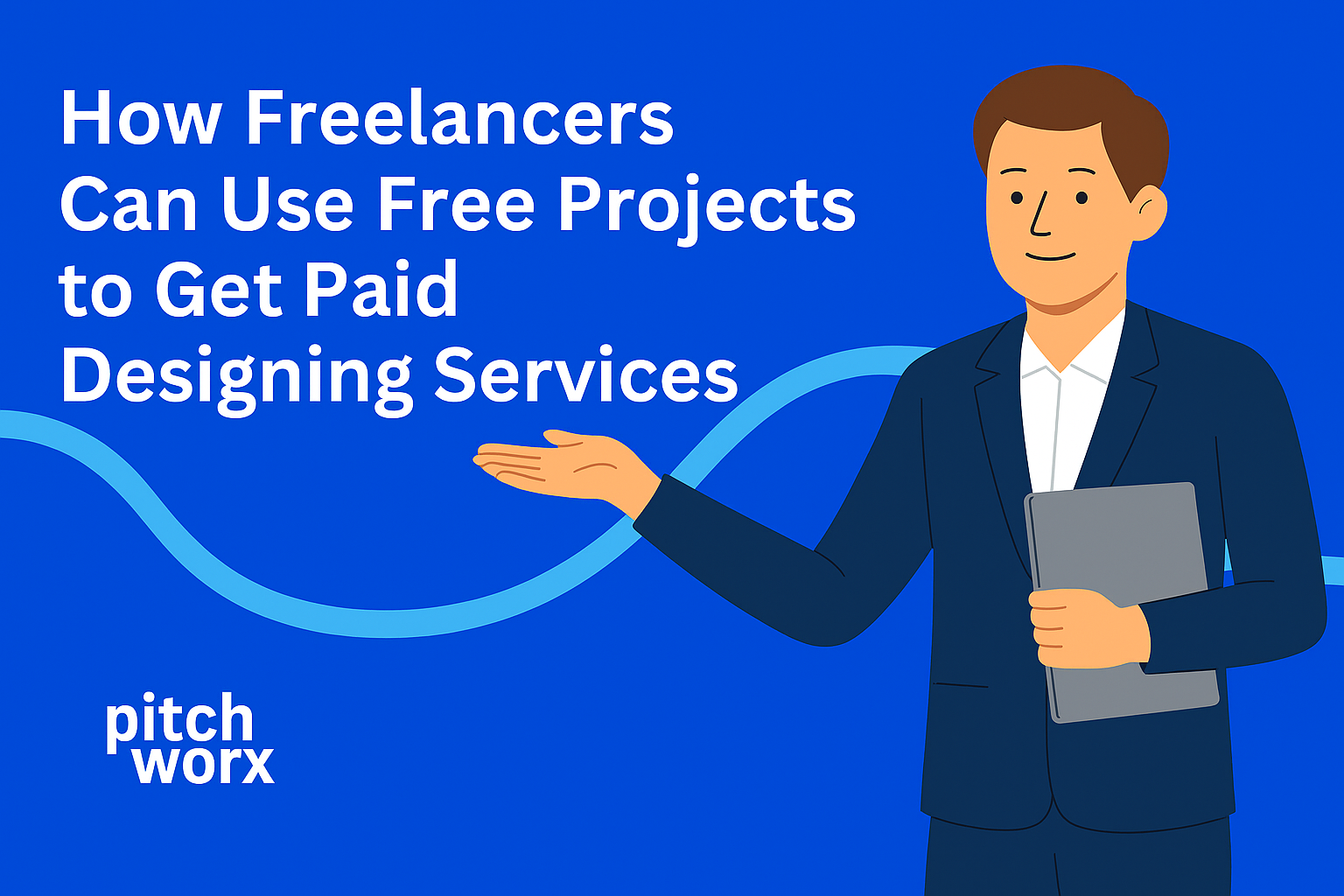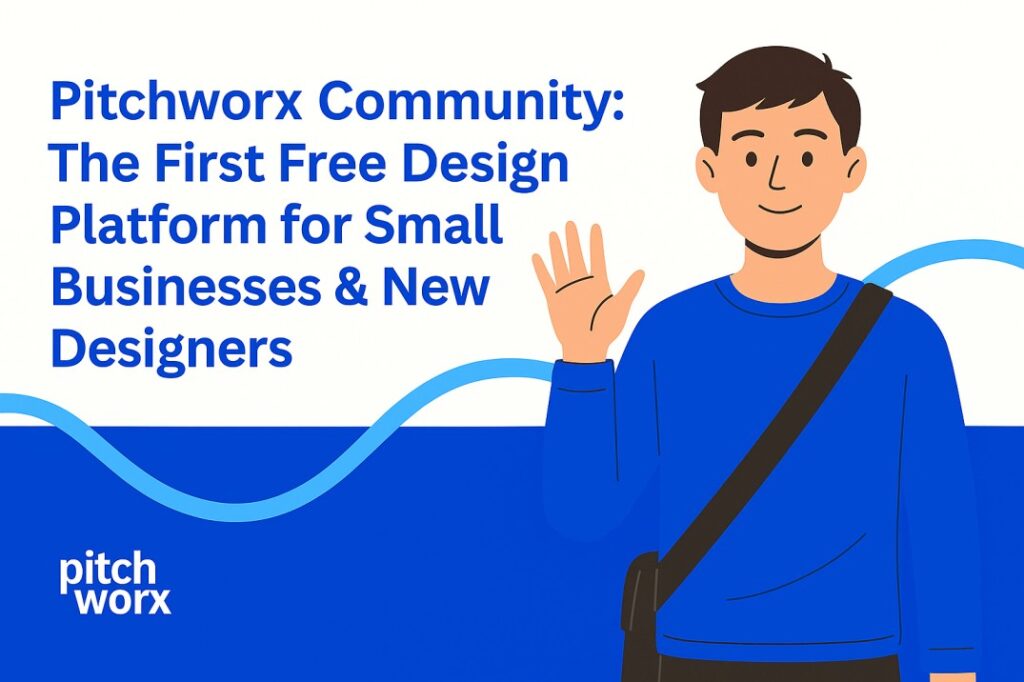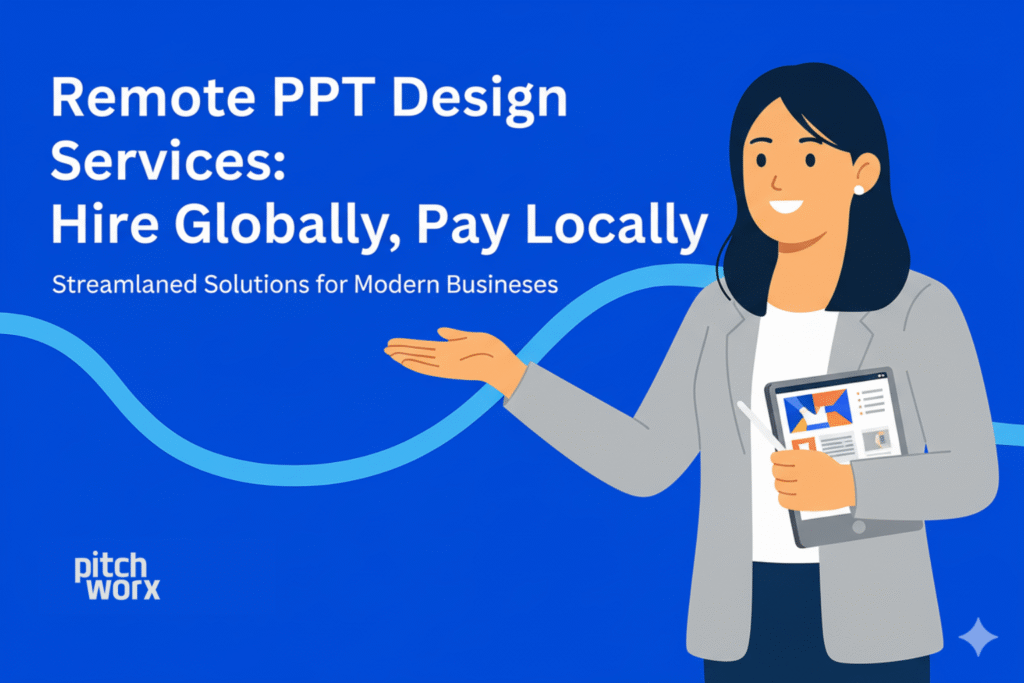How Student Designers Can Build A Strong Portfolio With Real Projects

Quick Answer
Student designers can build a strong portfolio by doing real projects for real people—startups, local businesses, NGOs, and communities—then packaging the work with a clear brief, process, and results. The Pitchworx Community is a great place to start: it’s a platform where students can take on live design tasks for experience (including Free Graphic Design Services for small clients) and also offer paid designing services to earn money, learn fast, and grow a credible portfolio.
Table of Contents
- Quick Answer
- Introduction
- Why Real Projects Beat Classroom Assignments
- Where to Find Real Projects
- What to Include in a Portfolio Case Study
- A Simple Portfolio Plan (6 Weeks)
- Example: Turning a Free Job into a Paid Relationship
- Free (or Freemium) Tools to Speed Up Real Projects
- How to Price Early Paid Work
- How Pitchworx Community Helps You Level Up
- Common Mistakes to Avoid
- Portfolio Checklist
- FAQs
- Conclusion
Introduction
A powerful design portfolio does more than show pretty visuals—it shows how you solve problems. Recruiters and clients want to see how you think, how you work with feedback, and how your design improves outcomes. If you are a student or recent graduate, the fastest way to build this credibility is to work on real projects.
That’s exactly why the Pitchworx Community exists. It’s a creative platform where student designers can:
- Work on real briefs for real clients (startups, SMEs, nonprofits).
- Offer Free Graphic Design Services to build case studies quickly.
- Upgrade to paid designing services as your quality improves.
- Get visibility through a community profile and referrals.
Visit pitchworx.com and look for the Community section to join.
Why Real Projects Beat Classroom Assignments
- Authentic constraints. Real clients have budgets, deadlines, and target audiences—your design must perform.
- Feedback loop. You learn how to take critique, revise quickly, and balance creativity with business goals.
- Measurable results. You can show the impact: “This new poster increased sign-ups by 32%.”
- Network & references. Happy clients become testimonials—and sometimes your first employers.
Where to Find Real Projects (Even as a Beginner)
- Pitchworx Community: Take small briefs, deliver work, collect feedback, and gradually move from Free Graphic Design Services to paid designing services as you gain confidence.
- Local businesses: Cafés, gyms, salons, tutors—offer one free asset (menu, flyer, Instagram post) in exchange for a review and permission to publish.
- NGOs & student clubs: Design event posters, donation banners, or micro-sites.
- Hackathons & startup weekends: Build logos, UI mockups, and pitch decks for real teams.
Tip: Start with one free piece, then propose a simple paid package. This is a natural way to move from Free Graphic Design Services to paid designing services without pressure.
What to Include in a Portfolio Case Study
Every project you add should be a mini story:
- Client & Context: Who is the client? What problem were they facing?
- Goal & KPIs: What outcome did you aim for?
- Your Role & Tools: Designer? Illustrator? Tools: Figma, Photoshop, etc.
- Process: Research, concepts, final design.
- Results: A metric or a qualitative quote/testimonial.
- Before & After Visuals: Show the improvement at a glance.
- Reflection: What you learned.
A Simple Portfolio Plan (6 Weeks)
Week 1–2: Foundation
- Create a clean portfolio site (Notion, Behance, etc.).
- Build two quick case studies using Pitchworx Community micro-briefs.
Week 3–4: Depth
- Do one brand mini-system (logo, color, type).
- Move one client from Free Graphic Design Services to a paid designing services bundle.
Week 5–6: Results & Polish
- Collect testimonials and basic metrics.
- Prepare a one-page PDF portfolio for outreach.
Example: Turning a Free Job into a Paid Relationship
- Client: A local bakery with weak Instagram presence.
- Free offer: 3 high-quality posts + a highlight cover set through the Pitchworx Community.
- Results: +28% followers in 30 days, +17% footfall from a promo code.
- Upsell: “Monthly pack: 12 posts + 4 stories + menu refresh” as paid designing services.
Free (or Freemium) Tools to Speed Up Real Projects
- Canva / Adobe Express: Fast social creatives and mockups.
- Figma: UI, UX, and collaborative presentations.
- Unsplash / Pexels: Free stock photos for starters.
- Coolors / Khroma: Color palettes and testing.
How To Price Early Paid Work (Simple Ladder)
- Starter: 5 social posts + 1 story template.
- Growth: 12 posts + content plan + cover photo.
- Brand Mini: Logo refresh + palette + type + 6 applications.
Be transparent with scope and revisions. As your results grow, your paid designing services rates should grow too.
How Pitchworx Community Helps You Level Up
- Real briefs, real feedback – pick tasks that fit your skill level.
- Transition path – start with Free Graphic Design Services, then list paid designing services packages.
- Showcase – your best projects are featured to attract better clients.
Common Mistakes to Avoid
- Only mock projects. Include at least 3–4 real client projects.
- No problem statement. Beautiful art without a goal doesn’t prove value.
- Overlong case studies. Keep them scannable—visual first, text second.
- No CTA. End every project page with “Want this for your brand? Contact me.”
Portfolio Checklist (Quick Scan Before You Publish)
- 6–8 projects max (quality over quantity)
- Each case study shows brief → process → result
- Testimonials and 1–2 numeric outcomes
- One project done via Pitchworx Community with client quote
FAQs
1) Can I build a portfolio with only Free Graphic Design Services?
Answer: Yes. Start with free projects to learn and gather testimonials, then switch to paid designing services as soon as clients see value. Even two or three strong free projects can open doors.
2) How many projects should a student portfolio have?
Answer: Aim for 6–8 well-crafted case studies, not 20. Show range and depth, but keep it focused.
3) How do I move from free to paid quickly?
Answer: Deliver fast, communicate clearly, and package your work. Offer a small, clear paid designing services bundle right after your free deliverable.
Conclusion
A strong student portfolio is built on real problems solved for real people. Start small with Free Graphic Design Services to earn trust and testimonials. Then package your value into paid designing services and scale your projects—and your income. The Pitchworx Community gives you a safe runway to practice, publish, and get paid.






Responses